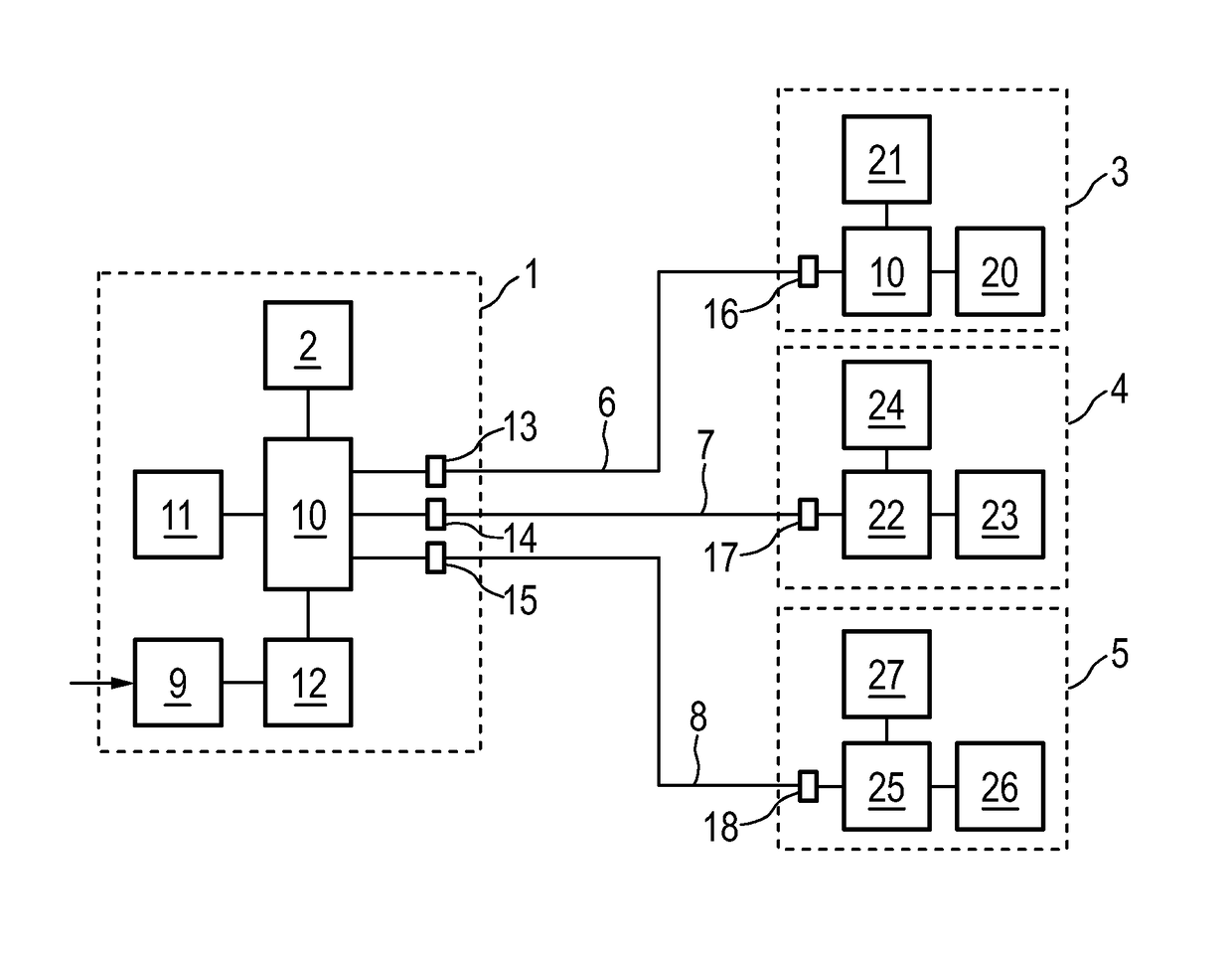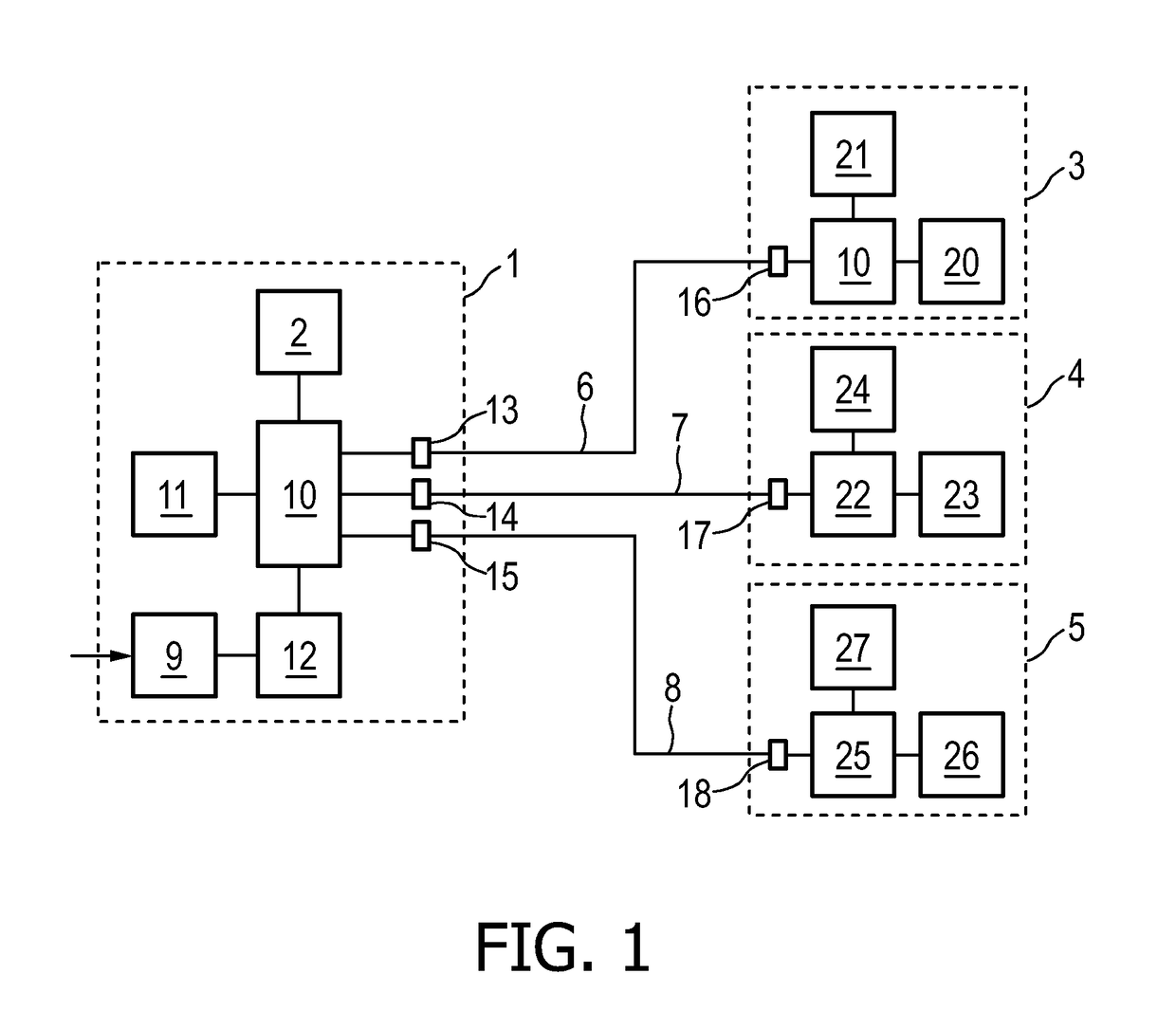Apparatus for powering an electrical consumer via a data connection
a technology for powering electrical consumers and data connections, applied in data switching networks, instruments, high-level techniques, etc., can solve the problem of quite high power consumption and achieve the effect of reducing power consumption
- Summary
- Abstract
- Description
- Claims
- Application Information
AI Technical Summary
Benefits of technology
Problems solved by technology
Method used
Image
Examples
Embodiment Construction
[0039]FIG. 1 show schematically and exemplarily an apparatus 1 for powering several electrical consumers 3, 4, 5 via several data connections 6, 7, 8. The data connections 6, 7, 8 are preferentially Ethernet cables. The apparatus 1 comprises several ports 13, 14, 15 for connecting the data connections 6, 7, 8 to the apparatus 1. Each of the electrical consumers 3, 4, 5 also comprises a port 16, 17, 18 for connecting the respective electrical consumer 3, 4, 5 to the apparatus 1 via the data connections 6, 7, 8. The apparatus 1 comprises a power supply 2 for supplying power to the electrical consumers 3, 4, 5 via the data connections 6, 7, 8 and a data receiving unit 9 for receiving data, which have been received, from, for example, an external controller, to be sent to one or several of the electrical consumers 3, 4, 5. However, the data receiving unit 9 can also be adapted to receive data from the electrical devices 3, 4, 5 through the respective ports 13, 14, 15. For example, the d...
PUM
 Login to View More
Login to View More Abstract
Description
Claims
Application Information
 Login to View More
Login to View More - R&D
- Intellectual Property
- Life Sciences
- Materials
- Tech Scout
- Unparalleled Data Quality
- Higher Quality Content
- 60% Fewer Hallucinations
Browse by: Latest US Patents, China's latest patents, Technical Efficacy Thesaurus, Application Domain, Technology Topic, Popular Technical Reports.
© 2025 PatSnap. All rights reserved.Legal|Privacy policy|Modern Slavery Act Transparency Statement|Sitemap|About US| Contact US: help@patsnap.com



